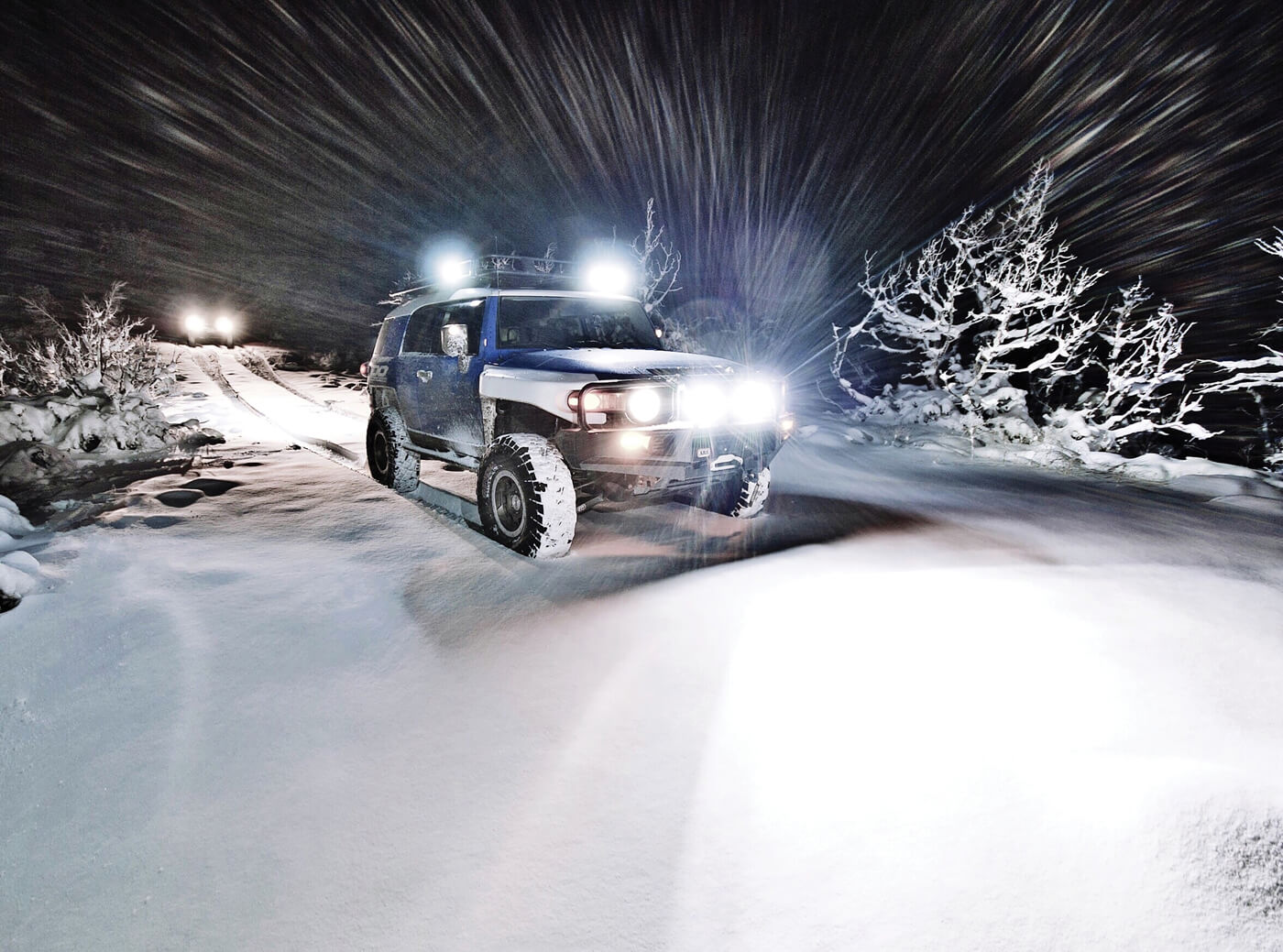Chasing Tail: Freshwater Fishing in a Kayak
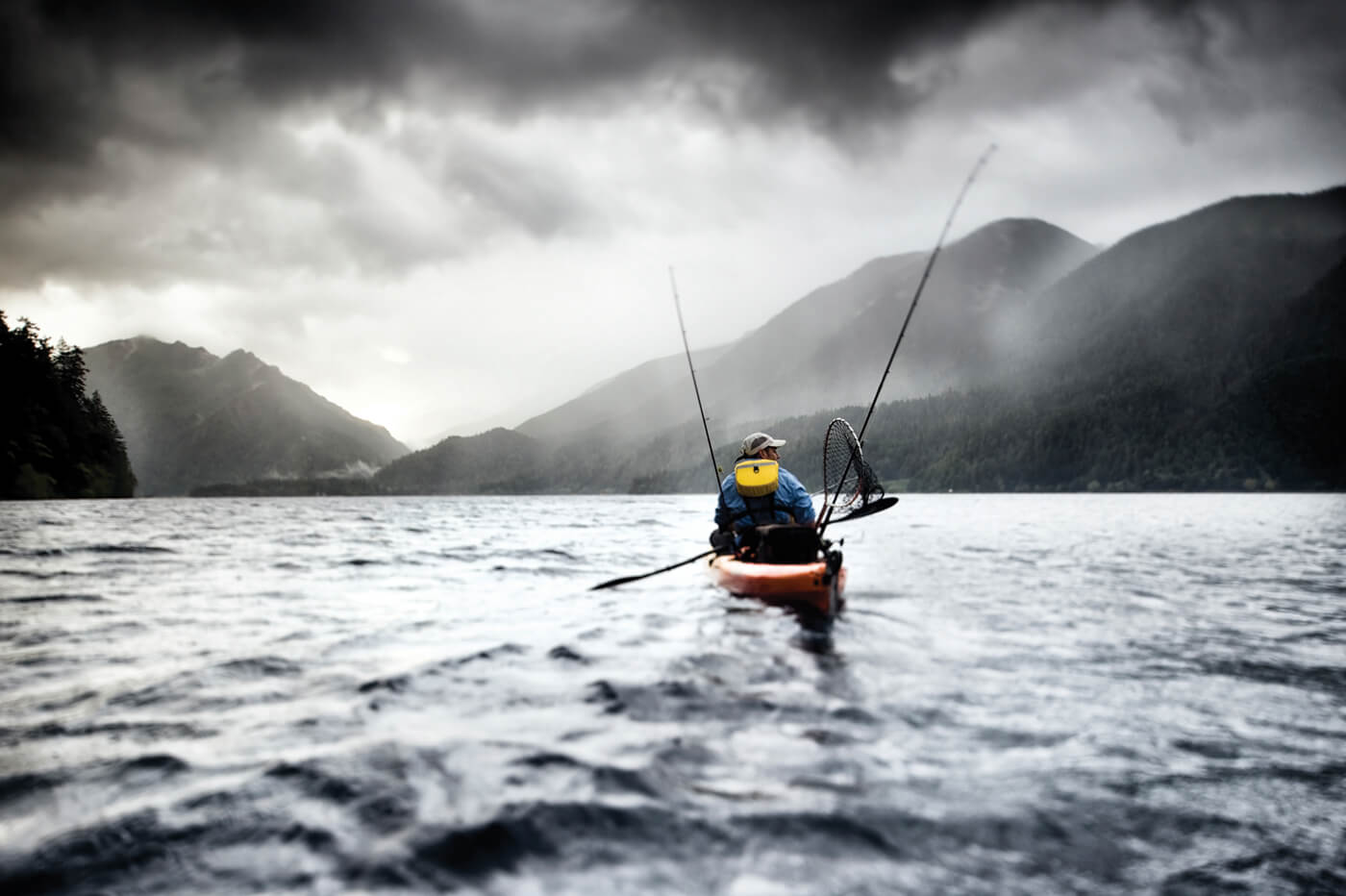
You don’t have to own a big boat anymore. Should you feel an itch to catch some fish, you can now strap a kayak to the roof of your vehicle and head out to your favorite lake, stream or river in quick time. In fact, the public’s growing interest in kayak angling has resulted in a host of different kayak styles and body shapes, each designed with the purpose of meeting a specific need.
Kayak angling is truly unique; you can traverse bodies of water that larger boats cannot access, and the maneuverability of the boat allows for a more active experience than fishing from shore or from a larger boat. If you have never been kayak angling, or are just starting to get your feet wet, here are a few tips and tricks to have you outfitted and chasing fish in no time.
The Kayak
The most important thing is the boat itself. Fishing kayaks are generally a bit longer and wider than standard sport models. This increased size allows for more stability while casting and fighting fish. Boats designed to meet an angler’s needs tend to feature more storage areas and gear mounting features than sport kayaks.
The lengths of fishing kayaks range from around ten feet all the way up to fifteen feet or more. Widths range from twenty eight to thirty six inches. As you would expect, the longer and wider the boat, the more stable it is. The trade-off to this stability is increased weight and less maneuverability around tight cover on the water.
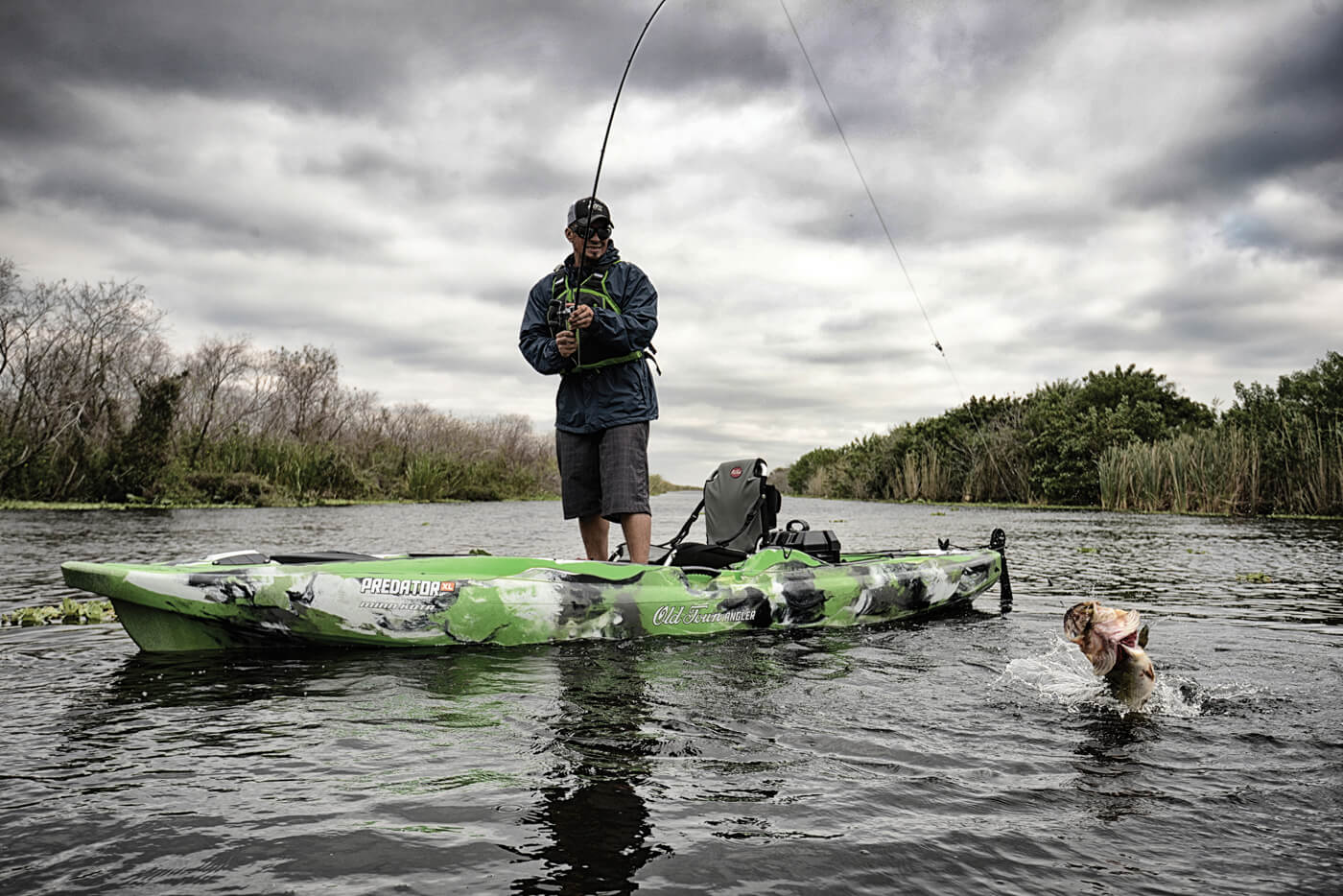
Big-lake anglers need a craft that will get you through the most challenging environments. Jackson Kayak’s Kraken 15.5 is shaped to handle big water and get on big fish.
Sit-On vs. Sit-In
Two basic schools of thought when it comes to kayak design are “sit-on” and “sit-in”. Sit-on models feature molded in seats and hollow cores. Sit on kayaks are the most popular among anglers due to the freedom of movement around the boat and their increased storage capability. While sit-on models are easier to mount and dismount and offer more flexibility in sitting and fishing positions, they also offer less protection from rough water.
Seasoned kayak anglers, such as Less Hatton and Brad Myers from Backwater Outfitters of Lexington, Kentucky both choose the sit-on style of kayaking. “For me, the Hobie PA12 is the ultimate fishing boat, it is stable, but not so big that it is unwieldy on the water, and the Mirage Drive folds up when you are in shallow water.” said Brad Myers.
Sit-in style kayaks have a cockpit opening that allows the user to sit down inside the hull of the boat with the user’s legs and lower body protected by the hull itself. Sit in style boats are generally more stable, since the angler’s center of gravity is closer to the water. The closed hull surrounding the angler’s body and legs help to protect the user from waves and rough water. Sit-in boats tend to be a bit tighter in the room department and offer fewer options for positioning while casting and fighting fish.
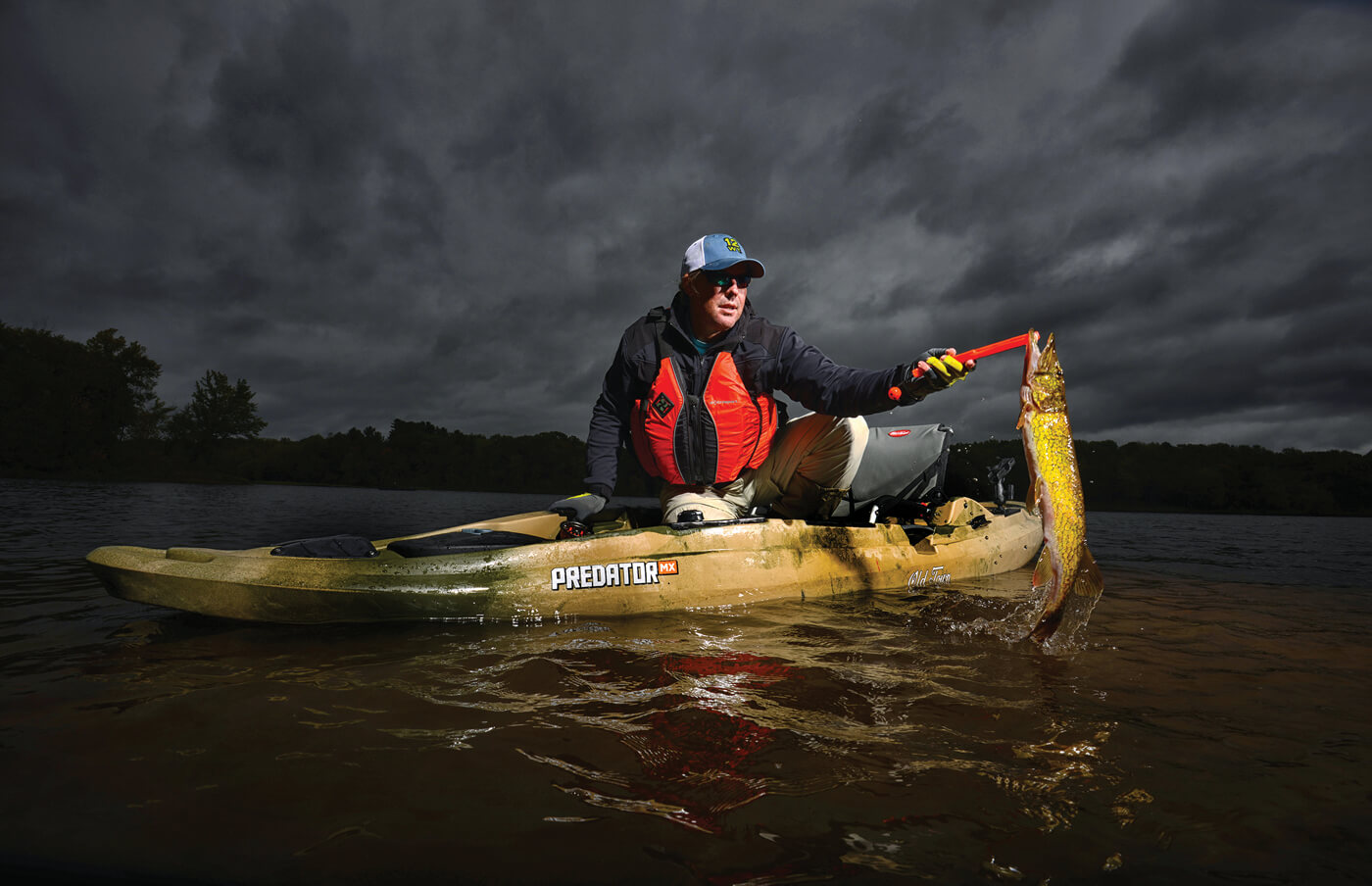
Select a craft that meets your specific needs. Old Town Canoe’s Predator MX features a slightly more rounded hull than its classic version, allowing you to move through tough water conditions with the utmost stability.
Foot Peddles
Paddles have always been the traditional method of propulsion for kayaks, but another option has appeared in recent years. Manufacturers like Hobie and Native have introduced foot peddle drive boats tailored specifically to the kayak angler. A peddle system similar to a bicycle extends through the floor of the kayak and drives either a set of drive flippers or a small prop (similar to the prop on a trolling motor).
The benefits of foot driven crafts include the ability to use both hands to cast or fight a fish while simultaneously propelling the watercraft. Foot drives are also handy on long trips, as leg muscles tend to be stronger than their arm and back counterparts. Drawbacks of peddle style kayaks are the necessity of deeper water to maneuver the boat without dragging the drive system along the lake or stream bottom, although Hobie’s Mirage Drive has a feature that holds it tight to the bottom of the hull in skinny water situations.
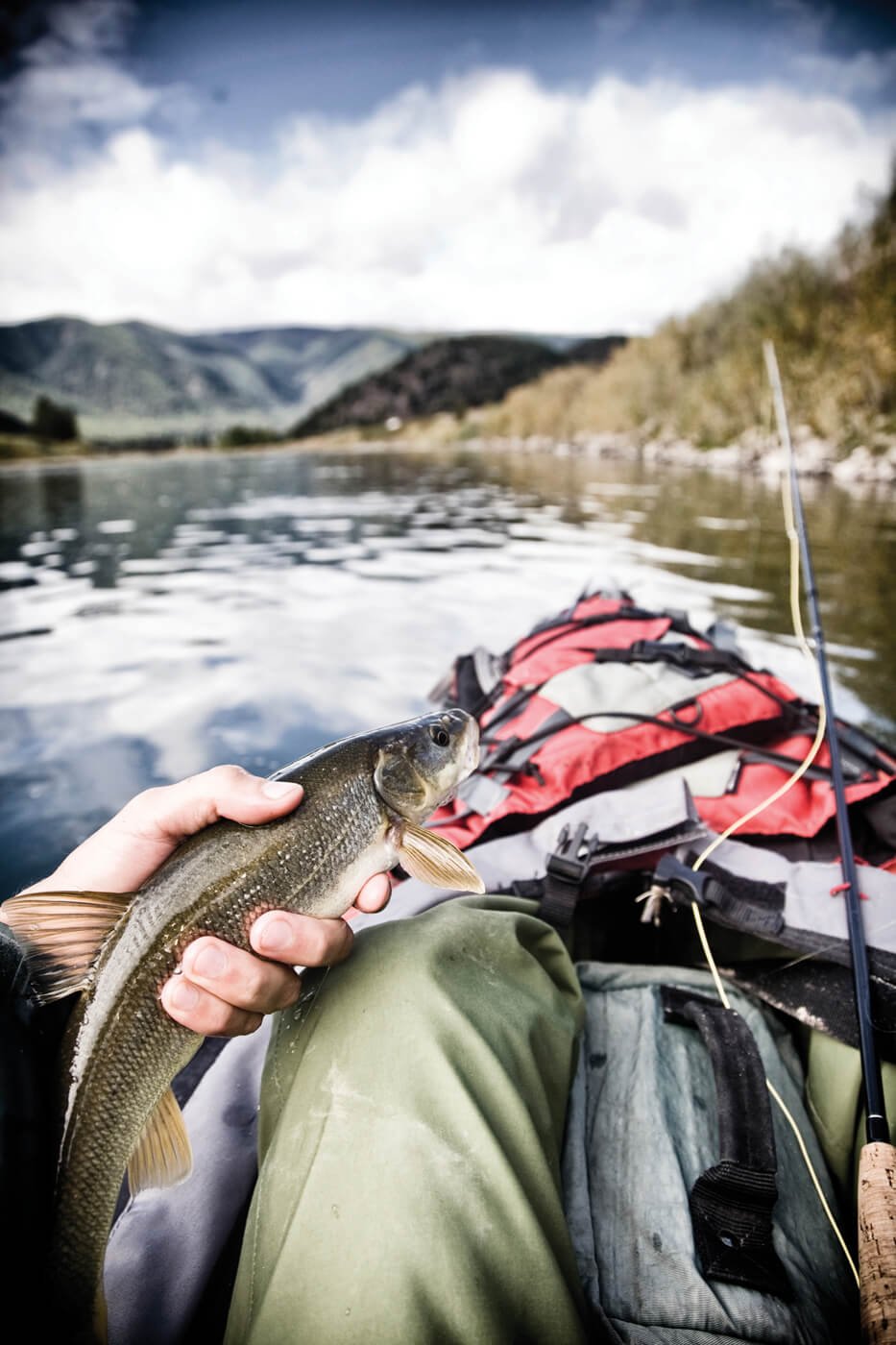
A foot-driven system allows you to free both hands while propelling your watercraft at the same time.
The best way to choose a fishing kayak is to try out several brands, sizes and styles before you settle on the boat for you. Local kayak fishing clubs, dealers situated on or near water, and even other fishermen at local waterholes are all good sources for testing kayaks. The only way to get a feel for a kayak is to sit in it—on the water.
Hatton adds that you should pay attention to the maximum payload and be sure to factor in gear weight when choosing a boat, “About the only time I ever run into someone that hasn’t had a good time fishing from a kayak, they had chosen a boat that was too small.”
Gear
Once you have your kayak selected, it’s time to add the gear to make it a customized fishing machine that fits you perfectly. Gear additions on a fishing kayak are a balance between functionality and weight. While there’s an almost unlimited selection of kayak add-ons on the market, everything added to a boat increases the weight and makes the craft a bit less responsive and easy to navigate. Talk to other kayak anglers in your area and find out what gear they use most often.
Seats
While just about every kayak comes with a molded seat, most of them don’t offer much in terms of comfort and support. An aftermarket seat makes for a much more pleasant day on the water. A good kayak-fishing seat offers lots of bottom and lumbar support, plenty of pouches and pockets for gear storage and plenty of freedom for movement.
Most aftermarket seats either strap or buckle to the kayak to keep it in place in the event of a spill. Luckily, many kayak manufacturers are paying attention to the need for quality seating and have begun to include them as part of fishing packages.
Rod Holders
Rod holders can be molded in to the kayak body itself in the form of tubes extending through the body, or they can be mounted on units that bolt to the hull. Many anglers prefer to have one mounted directly in front or just to the side of the seated fishing position, with others mounted behind the seat to hold spare rods. Look for a mount that grips the rod handle well enough to prevent fish or rough waters from pulling the rod overboard but is designed for easy access if a fish hits unexpectedly and you need to free the rod in a hurry.
Paddle, Gear and Rod Tethers
As stable as modern kayaks are, tip overs still happen on occasion. Secure everything to the boat with tethers: the paddle, tackle, extra rods…anything that might fall. Retractable or coiled tethers give the allow plenty of room to move stuff around while staying tight and out of the way when not in use.
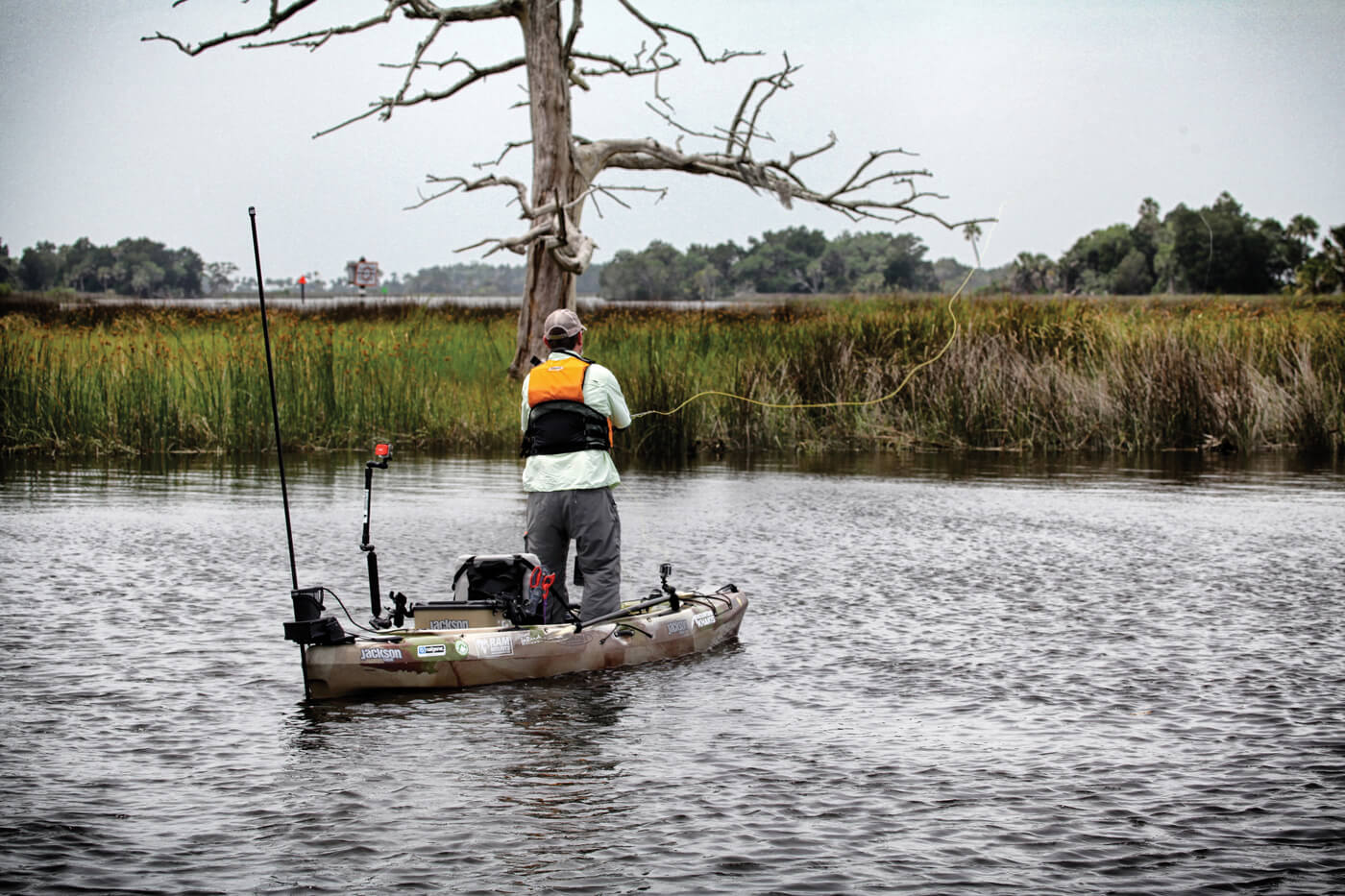
Before getting out on the water, equip your kayak with gear for every situation. Anchors and rod tethers offer convenience and safety, helping to keep your boat afloat while you’re fighting a big fish.
Gear Crate
It might be as simple as a milk crate lashed to the hull behind the seat, but a storage crate makes a handy spot to store small gear that needs to be readily accessible while fishing. A stretchable mesh cover that fits tightly over the crate, or a storage box with a closable lid help to keep gear secure.
Anchor
A small anchor helps to hold the kayak in position without help from the angler, should a promising spot need a bit more time. A three to five pound anchor is normally sufficient to hold most kayaks in place in all but the swiftest current. There are folding models if storage space is tight.
It is a good idea to rig a float on the anchor line and a quick disconnect between the line and the kayak. Should you need to disconnect from your anchor quickly for safety reasons or to fight a strong fish, the quick disconnect allows you to free yourself from the line in an instant, and the float lets you find your anchor when you return.
Tackle
Most kayak anglers lean toward six to seven feet for rod length for a balance of fighting power and handling in tight areas. In open water, Hatton has used crappie rods up to ten feet long, but a rod that long can get unruly in close cover.
Spinning or bait casting reels are the most common and can be matched to the type and size of fish you are likely to encounter in your area. This is another area where local clubs and fishing groups are an invaluable source of information.
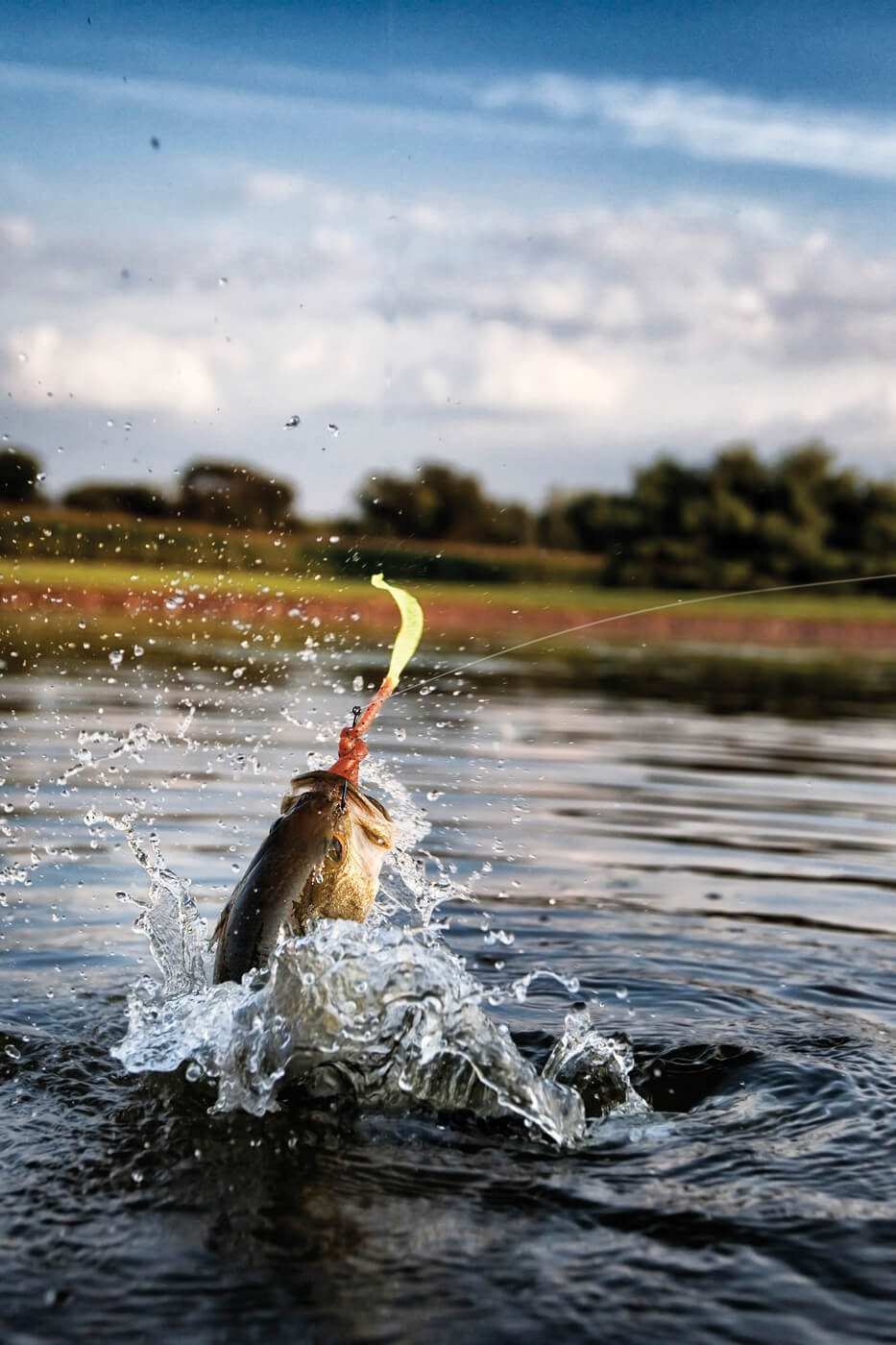
It’s all about weight on a kayak. Researching the type of fish species in the area allows you to tailor your tackle and streamline your load.
Camera Mounts
Since kayak anglers can access areas that other boats can’t, a camera is a handy tool to take along when fishing. Camera mounts that stand just behind and over the angler’s shoulder can hold small, waterproof video cameras like the Go Pro and record some spectacular action as the angler lands a fish.
Safety Equipment
Perhaps the most important gear for a kayak angler to take along on a trip is safety equipment. Anglers should always wear a PFD of their preferred style when on the water. Kayaks are small craft; large waves, high winds, or wakes from larger boats can capsize a kayak in a hurry. A PFD can be an absolute lifesaver if you go in well away from shore.
When sharing larger bodies of water with motorized boats, a tall orange flag attached to the rear of the kayak can help other boats see you in very bright or low light conditions where a smaller boat may blend into the water.
[divider]5 Fishing Tips[/divider]
1. Current and Wind
Kayaks are easier to control if you fish with the current or wind. Let the natural drift help you cover water. Keeping your paddle close and ready allows you to make small adjustments to keep your boat tracking in the right direction.
2. Cover
Fish like cover. Kayaks allow you to work your way into thick cover not accessible from the bank or from a larger boat. If you spot a promising looking piece of cover, fish it from the outside in, only moving your boat over water you have already covered with your lure. This keeps you from spooking fish by getting to close to them before you have a chance to cast in their direction.
3. Don’t Be Afraid to Beach and Fish from Foot
If the law allows (If you’re not fishing on public land; it’s private. Someone can own land all the way to the water and sometimes can own parts of the water, as well) don’t be afraid to beach your kayak and get out to cover a promising stretch on foot. Doing so allows you to fish an area without the added exertion of keeping your kayak in position.
4. Match the Hatch
Just like with fly-fishing, learn all you can about the fish species in your area, including their preferred food sources at the time you are fishing. Doing so allows you to customize your tackle selection and cut down on what you need to pack into your kayak.
5. Let the Boat Help Fight the Fish
Even a moderately sized fish can tow a kayak: Let that work in your favor by allowing the fish to pull you around, tiring out faster. Some kayak anglers even set the drag on their reel more tightly than they would in a larger boat to prevent line from leaving the reel as the fish pulls.
[divider]Without a Paddle: 4 Foot-driven Kayaks[/divider]
 Wilderness Systems A.T.A.K. 140
Wilderness Systems A.T.A.K. 140
LENGTH: 14′ 1″
WIDTH: 34″
WEIGHT: 86 lbs.
MAX CAPACITY: 550 lbs.
MSRP: $1,799
LENGTH: 13′ 8″
WIDTH: 38″
WEIGHT: 120.5 lbs. (with fitted features)
MAX CAPACITY: 600 lbs.
MSRP: $3,299
LENGTH: 15′ 7”
WIDTH: 30”
WEIGHT: 85 lbs.
MAX CAPACITY: 400 lbs.
MSRP: $1,449
LENGTH: 13′ 2″
WIDTH: 33.5″
WEIGHT: 86 lbs.
MAX CAPACITY: 425 lbs.
MSRP: $1,399.99
Editor’s note: A version of this article first appeared in the Winter 2015 print issue of Tread Magazine.




